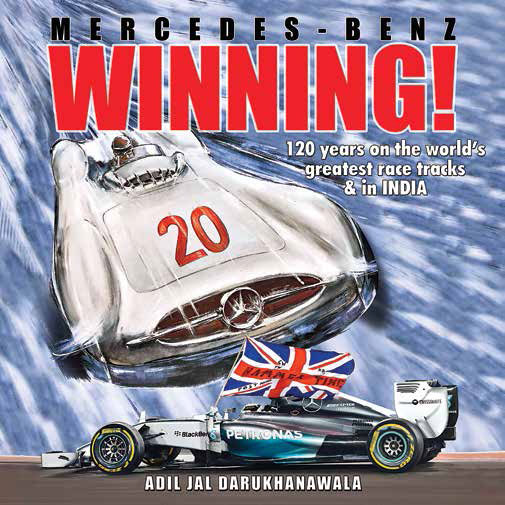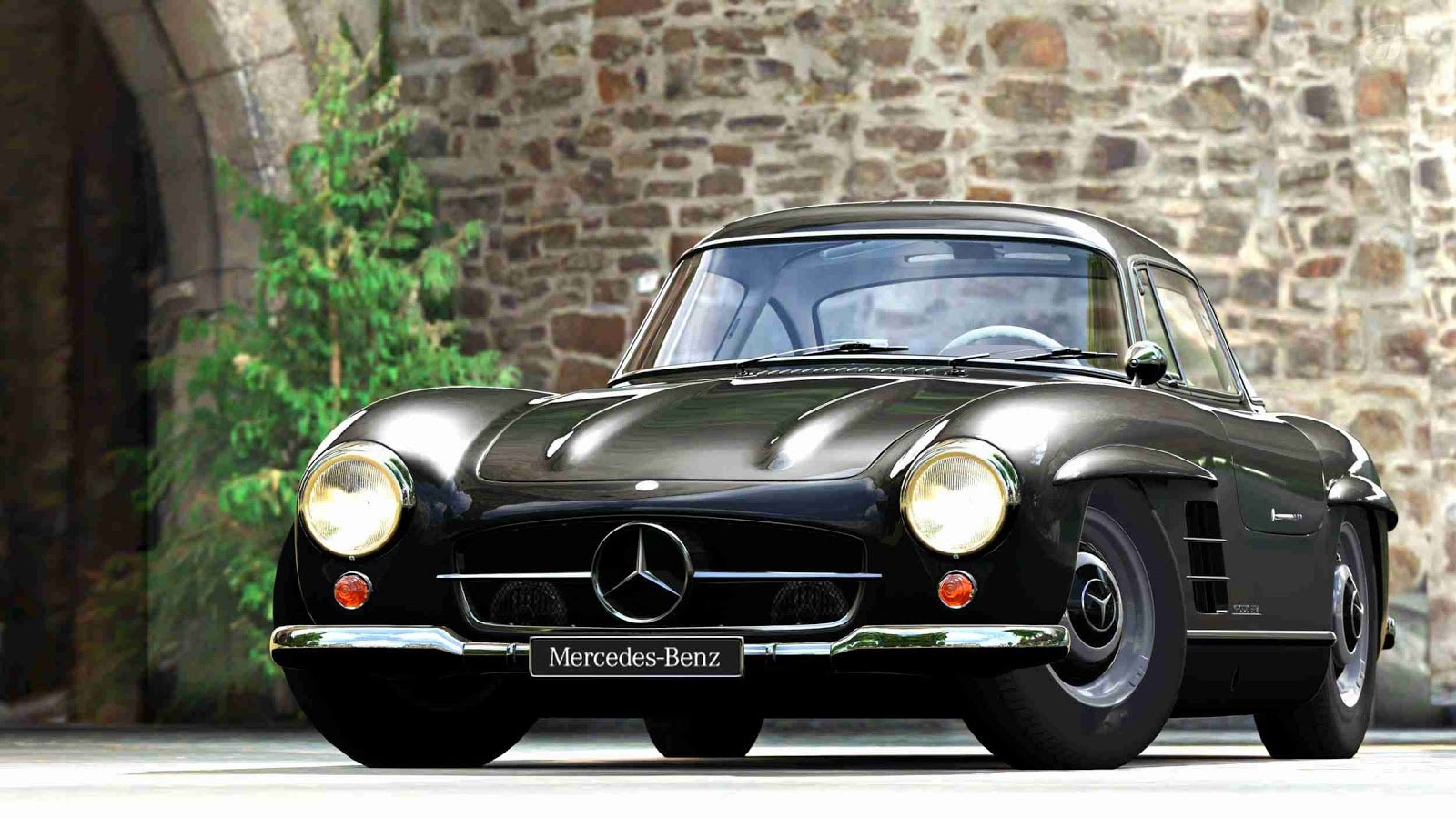
Adil Darukhanawala, leading motorsport journalist of the country, has penned an exhaustive, never-before written history of Mercedes-Benz comprising its 120 years of existence at Stuttgart and 20 years in India. The book has created a stir amidst automobile fans around the world. Titled `Mercedes-Benz: WINNING!’ it is a pictorial delight besides being the most comprehensive story ever written on this star automobile company By Vinita Deshmukh
It’s a coffee-table book, but one so heavy that you need to pump in some iron to lift it up! With 402 pages of thick glossy paper, in which are etched 970 photographs and over one lakh words, the book is a masterpiece on the iconic Mercedes-Benz.
The man who has penned this book of international class which is figuring at global coffee-table book competitions, is the indefatigable Adil Darukhanawala, India’s pioneer motorsport journalist. His dedication to the book is borne out by the fact that he single-handedly wrote the one lakh-odd words after intense research, which took him to the archives of Mercedes-Benz in Stuttgart, Germany. There he browsed through 12,000 photographs before he chose 970 of them for the book, wrote story-like photo captions for each one of them, designed the voluminous book and also took up the onus of printing it through a well-known publisher.
Adil’s thorough knowledge, information and research that has gone into the book, which has 120 pages dedicated to Mercedes-Benz in India speaks of his scientific approach, obsession with history, creativity and unending passion for the beautiful four-wheeler beast, which is a status symbol all over the world.
We often say, negatively, “If you give him a finger, he will take the whole hand.” In this case, Adil was asked to pen a book only on 20 years of Mercedes-Benz in India, but he told them he would write their entire story, from scratch. Who takes on so much upon himself ? You have to be madly in love with the subject to do that. Adil’s romance began, ever since he witnessed the London-Sydney Car Rally (which also had a Mercedes-.Benz participating in it) at the Katraj Ghat in Pune, on 26th August, 1977. The rally was passing through India and Pune was along the route. What followed was an assignment to write about the rally by the editors of the then Poona Herald for its next day’s edition. Its team of reporters too were at the same spot, and was quite enamoured with his knowledge which he got by listening to BBC sports news. Adil has raced through motorsport writing, ever since.
Informs Adil, through a photo caption, “On this page there is artistry, verifiable history, a bit of conjecture and a whole host of promise that was to shape the world of personal transportation no end. The year is 1897 and the bit of verifiable history without reproach is the actual sales register of Benz & Cie based in Bad Cannstatt, Germany which dates from 1895. This register is at the heart of the India chapter of not just Mercedes-Benz but all of Indian motoring, for on one of its pages is a column marked British Indien and entry number 85 is for a Benz Viktoria earmarked and shipped to a customer in Delhi. I have kept the German spellings for India and Delhi as they have been written in pencil by the sales administrator or the accountant who used to keep the records in an exactingly precise Teutonic way, and this record was shown to me by those great passionate automotive historians at the Mercedes-Benz Classic archives in Stuttgart. This car did come to India and there were requests for some parts in the early years of the first decade of the last century but some records were indeed lost during the First World War, some during the shifting caused by the merger into a unified administrative and records office in the period 1926-28, and maybe some during WWII. We Indians aren’t great at chronicling history nor do we give credence to what shaped the course of history, mired as we are with what happens in the present and that’s it.”
So how did Mercedes-Benz come to India? He explains in the book: “The agreement between Daimler-Benz and TELCO was signed on April 22, 1994 in Stuttgart and broadly it focused on a plan to make 20,000 units annually and a possible 50,000 engines per annum. The new entity was known as Mercedes-Benz in which the German firm owned 51 percent of the shares, while TELCO held the balance 49 percent. A new manufacturing facility was carved out of TELCO’s massive Pune plant and built by TELCO to the exacting standards of the three pointed star. This was the first instance of Helmet Werner’s ‘Made by Mercedes’ concept anywhere in the world and it commenced in India with two models of the W124 E-Class, the E220 petrol with both manual and automatic transmissions and the E250D with a diesel engine.”
How many know that Gottlieb Daimler and Karl Benz, the acknowledged fathers of the motorcar never actually met ever? Their paths never crossed each other though they were both from Germany and within handshaking distance of each other! Or that they were the earliest purveyors of the automobile art and rivals at that, both trying to push the envelope further than the other

Among all the Mercedes-Benz cars with an Indian provenance, the one shining example of a stately limousine-type machine that yet remains in the country has to be this 290 Pullman from 1936 that was once the official car of Nawab Mir Abul Quasim owaisi Mir Yousuf Ali Khan, Salar Jung III. he was the Prime Minister of hyderabad state during the reign of Mir osman Ali Khan, the seventh Nizam of hyderabad. he took over as Prime Minister in 1912 but his tenure was a short-lived one for he resigned just two and a half years later and concentrated on his philanthropy, art and culture. he was most passionate about arts and artefacts that chronicled history and his collection was probably the biggest anywhere in Asia. over 35 years of collecting masterpieces from not just India but also from all over the world, one can see just a fraction of these (housed in an overwhelmingly large facility) in the Salar Jung Museum in hyderabad to this day.
This car, a 290 dating form 1936 was bought for his official use and like so many of his precious artefacts, which were uncared for, met with the same treatment. It was found at a garage in hyderabad, owned by one Mohammad Masood, in a near derelict state by noted classic car collector Vikram Singh of Jaipur almost a decade ago, and then handed to united restorations in Jaipur to bring it back to its former glory.
Regarding the birth of Mercedes-Benz, Adil writes, “In 1885 Carl Benz built the world’s first automobile propelled by an internal combustion engine fuelled by gasoline. This three-wheeler came just a year after Gottlieb Daimler had made his gasoline-powered single-cylinder two-wheeled Einspur riding car to prove the efficacy of the engine he had built. A year later after Benz had made his three-wheeler, Daimler and his trusted friend and colleague Wilhelm Maybach built a four-wheeled car, actually a motor carriage with steering and brakes added in to what was essentially the most sophisticated horse-drawn carriage to date.”
It was only later that Benz and Daimler came together to form Mercedes-Benz. He writes: “How many know that Gottlieb Daimler and Karl Benz, the acknowledged fathers of the motorcar never actually met ever? Their paths never crossed each other though they were both from Germany and within handshaking distance of each other! Or that they were the earliest purveyors of the automobile art and rivals at that, both trying to push the envelope further than the other. And both put their names on their wares, something which is a given in our industry but it began with these two gentlemen as far as back as the mid-1880s.”
“While Gottlieb Daimler and his illustrious counterpart Karl Benz plugged away to invent and perfect the motor car, it was France and not Germany which was spearheading the car, for there were profits to be made aplenty with this ‘invention of the century’. And the fortune was to be found at the bottom of the pyramid rather than at the top end, just like we find today with cars for the masses.” The book makes delightful reading, not only for a motor enthusiast but for everyone who loves reading great stuff.
The otherwise modest, fun-loving, good-natured author of this book, sheds his modesty when he says, “I always say, Poona guys can do probably better than anyone else.” In this case, it is 100% correct. Keep going, Adil. Cheers to you.
By Vinita Deshmukh